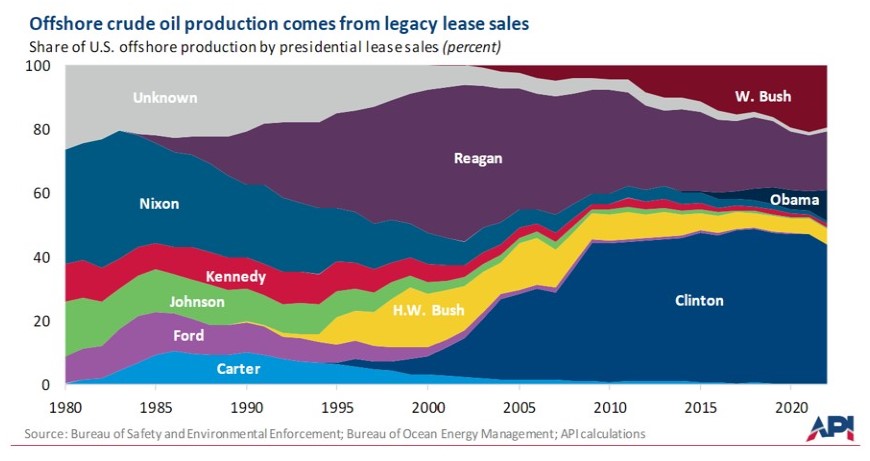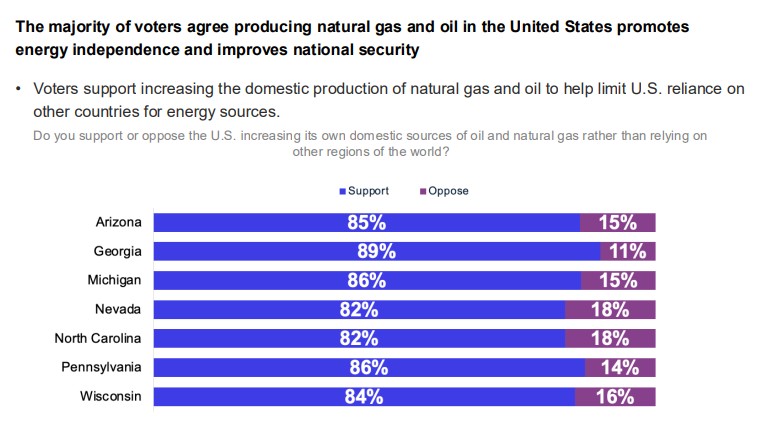About U.S. Oil Production ...
Dustin Meyer
Posted August 20, 2024
Heads Up: U.S. oil production continues to climb, the U.S. Energy Information Administration reports, reaching a record 13.3 million barrels per day (Mbd) in December – compared to 12.1 Mbd produced a year earlier.
Big Question: How did we get here?
Background: In 1970, American crude oil production reached 9.6 Mbd and then fell as the resources available and the technologies to extract them both hit their limits and natural declines took over. The next two decades were marked by falling production and rising foreign crude imports. Production sank to 5 Mbd in 2008 before the shale revolution – using modern hydraulic fracturing (“fracking”) and horizontal drilling technologies – drove production to 12.3 Mbd in 2019. After the pandemic slowed global economies and slashed demand, U.S. production dropped to 11.2 mbd in 2021. Recovering economies and restored demand pushed production to 12.9 Mbd in 2023.
Key Factors Drive Production: American oil and natural gas production is the result of many factors, including: demand that drives new development, access to resources (public and private), technology and innovation, and the policy environment. It does not happen with the flip of a switch. For example, offshore production can take more than a decade of planning, engineering and developing to come online.
Credit Where Credit’s Due: Today’s record oil production is largely due to investment decisions made under previous government policy as well as industry’s focus on innovation, such as fracking. API’s Mason Hamilton noted earlier this year that offshore lease sales under President Clinton (1993-2001) account for the largest share of current offshore production. Lease sales under President Reagan (1980-88) still account for about 19% of U.S. offshore production. Producing crude oil onshore takes less time but still requires clarity on policies, access to resources in the future, demand, and market stability. Clear, stable policies now and into the future enable investment decisions to be made with confidence.

Continuing America’s Energy Advantage: Because the U.S. leads the world in producing oil and natural gas – the world’s top energy sources – America enjoys a significant energy advantage over much of the rest of the world. But the advantage will not be sustained without government policies and new investment to replace naturally declining wells while keeping up with projected increased demand.
Washington Uncertainty: While production has grown significantly on state and private lands, in recent years Washington has hindered development on federal lands and waters, pausing new onshore permitting, and not providing consistent quarterly onshore leasing opportunities, as required by law. The current federal offshore leasing program is the smallest in program history, providing a maximum of just three lease sales through 2029. Meanwhile, the U.S. Energy Department has implemented a pause on permits for new liquefied natural gas export (LNG) facilities, creating uncertainty for American allies that rely on U.S. natural gas.
Voters See Value in U.S. Energy Leadership: Recent polling shows that U.S. voters in seven key battleground states recognize the value of American production – for the economy and the nation’s energy security. In each state, eight in 10 voters said they support increasing domestic oil and natural gas production to help limit U.S. reliance on other countries.

Policy Changes Needed: Americans deserve better – better policies and better strategies. Federal lands and waters account for 25% of U.S. oil production (see here and here) and about 11% of natural gas production. Without more robust leasing strategy – and recognition of the role of U.S. LNG exports in maintaining American energy leadership around the world – the U.S. could squander its energy advantage. API’s Five-Point Policy Roadmap lays out a bipartisan path to strengthen American production and help with inflation.
Two key points from API President and CEO Mike Sommers on Fox News:
- “We know for a fact that we're going to have to produce more oil and gas in this country, because energy demand is going up in the United States and throughout the world, not down.”
- “As a country, we're the No. 1 one producer of oil and gas in the world right now. If we lose that posture, if we lose that energy leadership that we have fought so hard for, for decades and decades, what does that mean for our posture in the world from an energy-security perspective?”
Bottom line: Given geopolitical uncertainty in the world, there has never been a better time for strong U.S. energy production today and policies that support it in the future. Americans must be able to count on affordable, reliable energy that comes from U.S. oil and natural gas.
About The Author
Dustin Meyer is Senior Vice President of Policy, Economics and Regulatory Affairs, leading API’s public policy departments and overseeing the organization’s economics, research, and regulatory functions.
He previously served as API’s Vice President of Natural Gas Markets, dealing with issues related to domestic and global natural gas markets, as well as natural gas technology and innovation including renewable natural gas, differentiated/responsibly sourced natural gas, hydrogen and the use of CCUS in the power sector.
Prior to joining API, Meyer led analytics, forecasting and consulting services on global LNG and renewable energy markets for Energy Ventures Analysis. He also held analysis positions at PFC Energy and then IHS Energy on upstream investment in North American oil and natural gas, including liquefaction projects in the U.S. and Canada. Meyer also worked at ICF International on the transportation policy team and for various NGOs.
He earned his undergraduate degree at Princeton University and received his Master’s focused on Energy Policy & Economics from Yale University.


